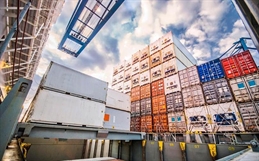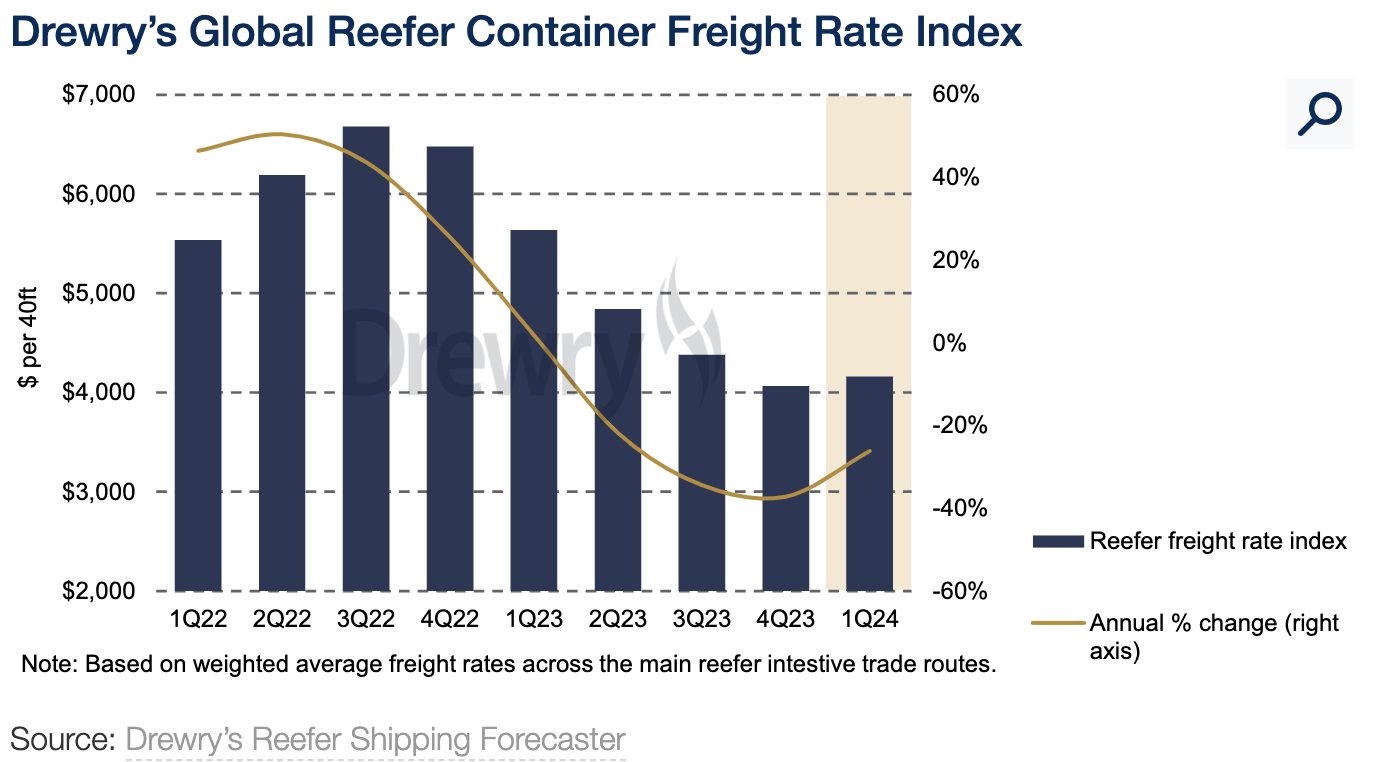
The recent rise in reefer shipping rates is expected to prove short-lived as the trade adjusts to the rerouting of vessels and excess containership capacity is deployed to support longer transit times, according to a new Drewry report.
The independent maritime research consultancy firm said while the subsequent re-routing of cargoes continues to add some delays and complexity in repositioning reefer equipment, this is not expected to have a long-term effect on freight rates.
Drewry's Global Reefer Container Freight Rate Index, a weighted average of freight rates across reefer-intensive trade lanes, declined 37% in the fourth quarter of 2023 to a reading of US$4,065 per 40ft container but is estimated to have recovered moderately in the current quarter.
The analysis noted that the ongoing violence in the Red Sea continues to cause shipping lines to reroute cargoes via the Cape of Good Hope, while record low water levels in the Panama Canal are simultaneously driving delays there.
"While the long-term outcome of events in the Middle East remains highly uncertain, the expectation is for reefer container freight rates to resume their downward trajectory over the course of this year," Drewry added.
It said that a glut of newbuild container vessels entering the market this year is set to offset recent upward pressure on rates, with average reefer container freight rates set to revert to their long-term downward trend later this year.
Drewry said trade volumes have been largely unaffected by the disruption, with volumes for the fourth quarter estimated to have risen by 3.2% year-on-year (YoY).
Ongoing weakness in the Chinese economy contributed to weaker-than-expected demand for key protein shipments in 2023, but the trade posted a return to growth in the second half of the year, boosted by high beef exports from Brazil and Australia.
Drewry noted that a secondary impact of re-routing cargoes has been on the pool of reefer container equipment, as extended transits have meant that empty boxes take longer to be redistributed across the network.

Reefer container to grow, but not as earlier expected
"Despite this, Drewry expects the global pool of reefer containers to expand at just under 10% over the next five years, a downgrade from previous forecasts," the report said.
"This is the result of some easing in oversupply following the pandemic, coupled with better monitoring of fleets going forward, which is expected to drive efficiencies and streamline operations," it added.
Meanwhile, volumes on nearly all major reefer-intensive trade routes fell last year as an expected uptick in cargo demand failed to materialise.
Drewry said deflationary pressure in China meant that key North America to Asia and North Europe to Asia volumes slid further in the final quarter.
It added that trades to and from Europe continue to evaluate the impact of ETS costs on competitiveness, as the next milestone will require companies to submit allowances for 70% of verified emissions next year, rising to 100% in 2026, depending on vessel size.
Despite persistent volatility in the global economy, the core nature of reefer commodities in supporting the world's expanding population means that the sector is expected to return to growth.
"After declining in 2023, Drewry forecasts that seaborne reefer traffic will recover in 2024, expanding by 1.7%," the report said.
Drewry noted that the modal shift to containerships is also set to continue, with containerised reefer traffic projected to deliver a CAGR of 3.1% over the next five years, which will help to support reefer freight rates over the medium term.



